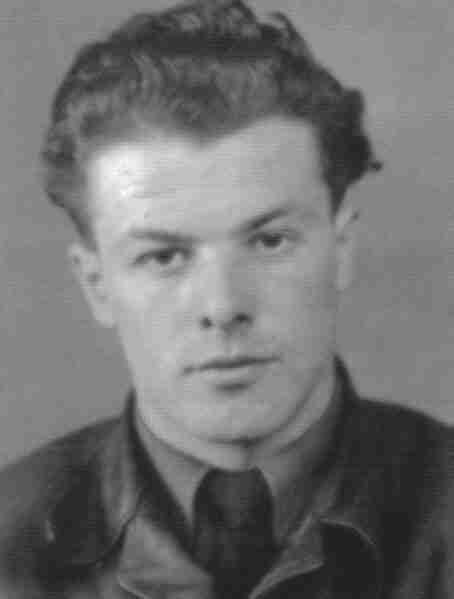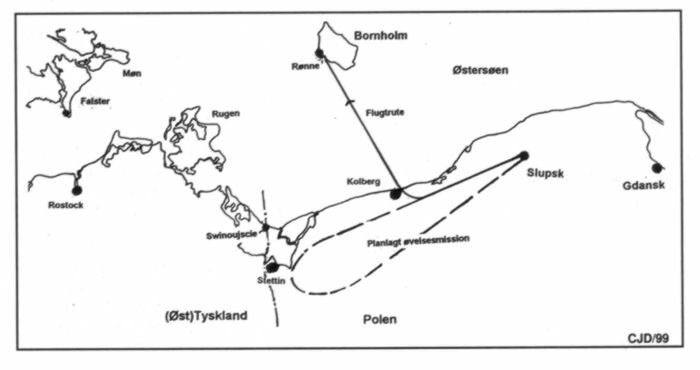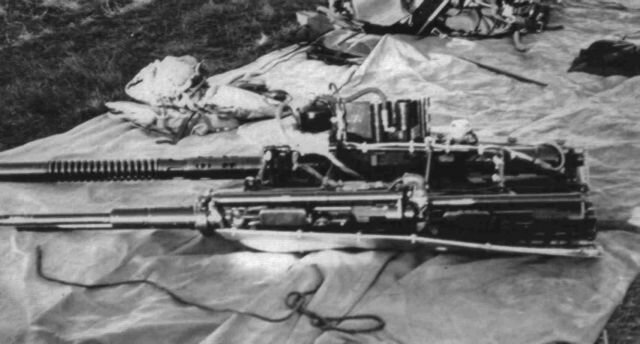|
From ACIG.org Europe & Cold War Database
This is a translated and reworked version of an article published by Carsten Bak in "Flyv" magazine (Danish Aviation Magazine), in February 1999, about defection of a Polish Air Force pilot to the West. On Thursday March 5, 1953 at 0940 the small Danish island named Bornholm became a world known locality. (a date which became World renowned as the day Stalin died). The Polish sub-lieutenant Francizek Jarecki on that date decided to defect and land his MiG-15bis at Rønne Airport on Bornholm and ask for political asylum. This was the first time that the Western powers had the opportunity to examine an undamaged fighter of this type.
Francizek Jarecki was an elite pilot of the Polish Air Force and had in 1952, after having completed the Flying School as no.1, at the age of 21 been transferred to the 10.Sqduadron based near Slubsk. This squadron was only manned by elite and absolute political reliable personnel due to its nearness to Bornholm. Jarecki explained during his interrogation that as a student he was a president of the local Polish-Russian friendship association, became a member of the Communist party and was selected as a political officer in his squadron. As such he promoted Communism and was supposed to report on lack of loyalty of his fellow comrades. At Slubsk Air Base he was so trusted that a billboard was displayed with the text: “Pilots! Strive yourselves to be as dedicated as Lt. Jarecki”. In secret Jarecki hated the regime. Strangely enough, he had received a short-wave radio personally from Russian General Ivan Turkyel. This was a price for Jarecki being the most successful student in his class at the Flying School. The Polish pilot used this radio to keenly listen to the BBC. On March 5 Jarecki was formation leader for a flight of 4 MiG-15s. The formation was divided into two and two and the first two took of followed by Jarecki and his wing-man who followed in parallel at a higher level. The route they were to follow is shown on the map bellow. The chart Jarecki had in the cockpit did not show Bornholm, but he had on another occasion seen that the island was north of Kolberg at a distance of about 100km. Just before Kolberg, Jarecki broke the formation, dived towards the sea and jettisoned his drop-tanks. Below 1.000 feet he set course for Bornholm, which he reached in about 10 minutes. His wing-man reported about the incident to the GCI and was ordered to execute operation “Krest” - which was to follow and shoot Jarecki down. This was not affected, maybe because Jarecki had too big a lead.
Jarecki had been briefed that there was a large American Air Base on Bornholm so he had little worry about his landing. Thus his surprise was great when he realised that there was no Air Base or American aircraft on the island but only a 1200 m long grass strip of Rønne Airport hardly suitable for landing his jet. To the amazement of the local population Jarecki circled the island looking for the “American Air Base” until he realized that the only way down was at the small strip. He executed a perfect wheels down landing!
Jarecki asked immediately for political asylum and was taken into custody by the local police. The military quickly fenced the area to secure the valuable price which was hidden under a tarpaulin. A Catalina from the Danish Air Force was hurriedly dispatched with a group of technical experts and the Chief of Air Force Accident Committee Colonel Erik Rasmussen. Under his command was the aircraft dissembled and investigated. The initial investigations lated for two days before the aircraft was brought to the harbour and shipped to Copenhagen, dutifully escorted by ships of the Danish Navy. At Værløse Air Base the Headquarters of the Air Material Command the aircraft was totally dismantled and investigated. The workmanship of the fuselage impressed the investigators and it was also rumoured (but never confirmed) the electronics contained American parts. There is no doubt that all the results of this inspection were immediately forwarded to the other NATO allies. The aircraft was then packed in crates and returned to Poland, on 20 March. The Danish Air Force at this time did not have any radar station on Bornholm which could detect aircraft coming from Poland and thus the MiG-15 arrived totally undetected. First in 1953 was the first radar installed on Bornholm, but a real effective long range radar was not present until 1962. Sub-lieutenant Francizek Jarecki got political asylum in Denmark and became a civil pilot. Sadly, he was killed in an aircraft accident on October 22, 1965. Two other Polish Air Force pilots defected to Bornholm in the 1950s. Already on 20 May 1952 Sub-Lieutenant Zdzislaw Jazwinski flew his MiG-15 to the army training ground near Almegård Kaserne. He was given asylum. On 25 September 1956, 2nd-Lieutenant Zygmomd Goezniack left Poland in his MiG-15bis and tried to land on the newly asphalted runway at Rønne Airport. Unfortunately work was still in progress as machines and workmen were occupying the runway. Consequently the aircraft successfully landed wheels-up on the grass. He also was given asylum. In both cases the aircraft were disassembled (“so as to make it easier to crate and return it to Poland”) and investigated.
© Copyright 2002-3 by ACIG.org |








